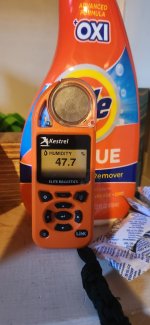Let me preface this - I dont know shit about concrete. The most I've ever done is mix up some quickcrete in a bucket and poured it into a hole in the ground to repair a fence post.
I would like to pour a 30"×40" pad, 6" tall, in my basement utility room to elevate a gun safe to protect it from any possible future water on the ground. The floor is a 1960's era poured concrete slab. It has a very smooth, almost polished finish. The floor has a gentle slope towards the center of the room so I need to have a flat pad.
My plan is to drill the current slab and hammer in maybe 6 pieces of rebar vertically so they stand 4" proud from the existing slab (and therefore will be 2" below the top of the new pad). Then pour the slab. Then finish with a sheet of heavy duty plastic on top, followed by a bit of carpet. Once the safe is dropped on the pad, I'll drill the 4 anchor holes and secure with Titen HD anchors from Simpson.
I've watched a couple YT videos and have a pretty good idea about the general process but I have some specific questions:
- Whats a good, self leveling concrete mix to buy that will withstand ~1500 lbs of static weight?
- I presume i will want to roughen up the surface to promote adherence. Whats a good DIY tool option for that? Then I'll apply a bonding agent before pouring.
- What else should I be thinking about or doing to make my life easier and ensure this pad stays intact and doesn't fall apart in 5 years?
I would like to pour a 30"×40" pad, 6" tall, in my basement utility room to elevate a gun safe to protect it from any possible future water on the ground. The floor is a 1960's era poured concrete slab. It has a very smooth, almost polished finish. The floor has a gentle slope towards the center of the room so I need to have a flat pad.
My plan is to drill the current slab and hammer in maybe 6 pieces of rebar vertically so they stand 4" proud from the existing slab (and therefore will be 2" below the top of the new pad). Then pour the slab. Then finish with a sheet of heavy duty plastic on top, followed by a bit of carpet. Once the safe is dropped on the pad, I'll drill the 4 anchor holes and secure with Titen HD anchors from Simpson.
I've watched a couple YT videos and have a pretty good idea about the general process but I have some specific questions:
- Whats a good, self leveling concrete mix to buy that will withstand ~1500 lbs of static weight?
- I presume i will want to roughen up the surface to promote adherence. Whats a good DIY tool option for that? Then I'll apply a bonding agent before pouring.
- What else should I be thinking about or doing to make my life easier and ensure this pad stays intact and doesn't fall apart in 5 years?



